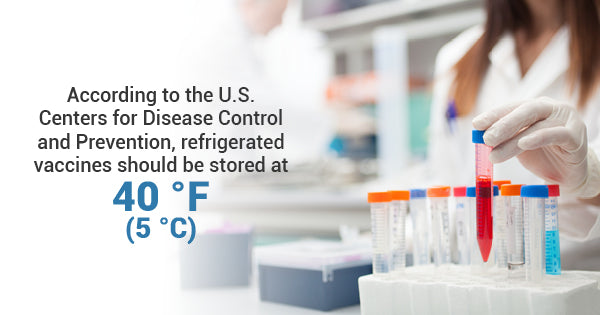Vaccines are vital to humanity — they protect us and the most vulnerable from deadly diseases and viruses. Due to their makeup, they need to be handled with the utmost care; even a slight variation outside of their ideal temperature range (refrigerated vaccines need to be stored at 40 degrees Fahrenheit, frozen between -58 and five degrees Fahrenheit) results in vaccine breakdown, which leads to reduced effectiveness in the recipient. Anyone who has ever received a vaccine or worked in healthcare is familiar with the routine — but did you know that it also applies to animal vaccinations?
That can make life difficult. Human beings file into doctor’s offices and pharmacies in an orderly and patiently wait while the doctor retrieves the inoculation from the nearby pharmacy-grade refrigerator or vaccine freezer. The same goes for household pets: the medical-grade refrigerators and lab freezers are right on the other side of the door, across the way, or down the hall. When you need to vaccinate a herd of cattle, however, you don’t get the luxury of a vaccine refrigerator within proximity. As a result, inoculating your herd in the heat of the summer or the dead of winter can be a costly — and risky — endeavor.
“A vaccine can cost more than $3 per head, and if not stored properly, the vaccine can be rendered ineffective,” said Bob LeValley, Oklahoma Beef Quality Assurance coordinator with Oklahoma State University’s Division of Agricultural Sciences and Natural Resources. Respiratory disease is incredibly taxing and costs the U.S. cattle industry more than $2 billion annually.
Chute-side refrigerators have become the go-to way to combat the risk involved. Unfortunately, the shifting nature of their external conditions makes them extremely hard to regulate. Researchers at the University of Arkansas and Idaho looked at the consistency of temperatures for various pharmacy-grade refrigerators over a 48-hour window: only 26.7% were within the acceptable temperature limit 95% of the time. LeValley thinks vigilance is the best way to balance the scales.
“Producers need to be aware of these variations so they can adjust refrigerator temperature as needed,” he said. “Thermostats also can be variable from unit to unit, so keeping a thermometer inside works well to monitor and make adjustments as needed.”
